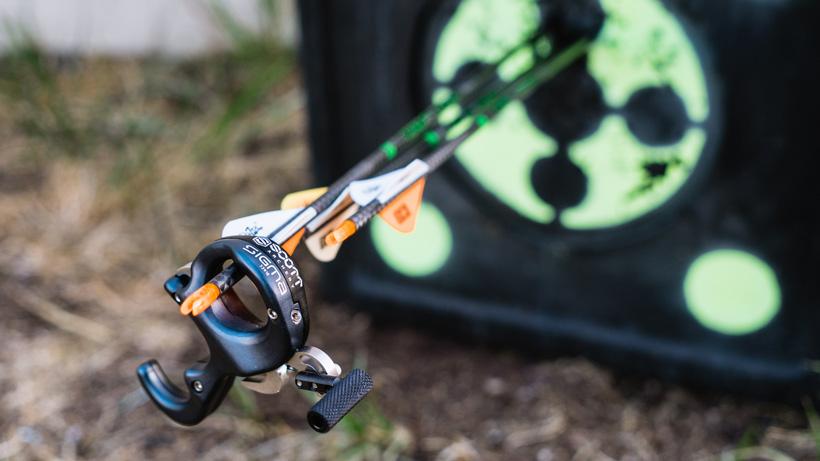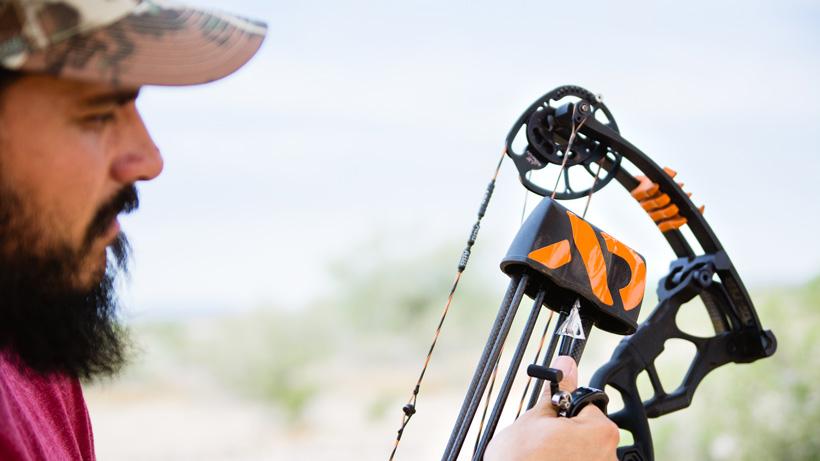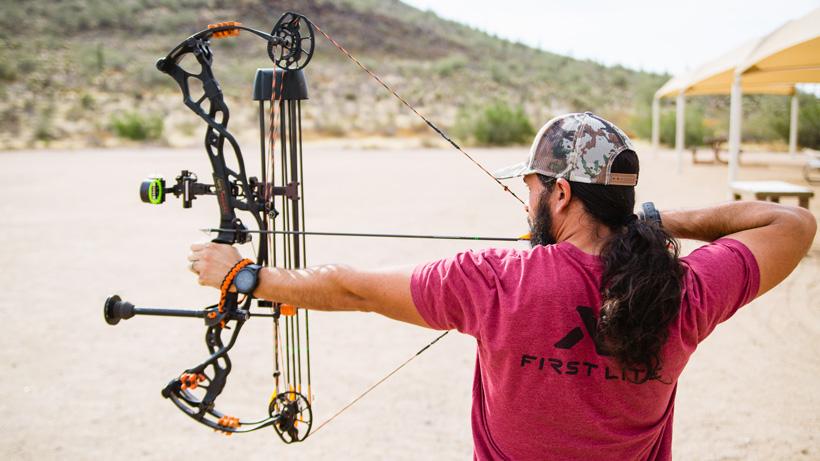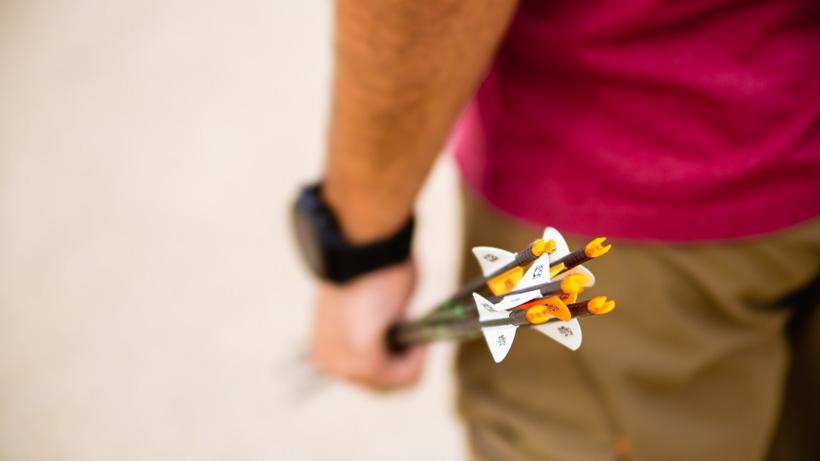







Draw results are showing themselves, new gear is being purchased and plans for the coming fall are racing through the minds of many of us. The anticipation this time of year is through the roof for what lies ahead. Some of us will be heading deep into the backcountry above the treeline in search of big velvet mule deer. Others will be trying out for the orchestra that is the September song and hoping to coax a big rutting bull elk into bow range. Whatever your flavor is, if you are a bowhunter, I’m sure that you are starting to send more than a few arrows down range in preparation for that moment we all long for. You know what I’m talking about. Those images get burned into our minds when we are at full draw, locking one of our sight pins onto the vitals of an unwary animal. A hunter only gets so many chances to experience things like this in life. If you aren’t shooting broadheads within your prep for these moments, you might be setting yourself up for disappointment.
“But the package says field point accuracy? Why should I have to actually practice with them?” Field point accuracy gets thrown around a lot in the broadhead market. I think this is because of a few different reasons. The first is that nobody wants to have to re-sight their bow in with broadheads. It sounds like a pain, right? Jumping between field points and broadheads; having to adjust your sight each time. It can also get costly. Let’s be honest: broadheads aren’t cheap, especially when you compare them to field points. Ruining a field point is one thing, but ruining a broadhead? That can add up over time and might even cause you not to shoot your bow as much for fear of ruining heads. So, do you see why “field point accuracy” is so appealing? It involves way less work.
Now, if you think I am insinuating that field point accuracy in a broadhead doesn’t exist, let me step in here and tell you respectfully that you have got it wrong. I have shot multiple broadheads through the years that shot right with my field points. No adjustments were needed. Of course, tuning comes into play here as well. If your bow isn’t tuned properly then you might have issues with getting broadheads to fly right. When the arrow leaves the bow, it needs to be flying straight and, if not, those blades on the front end are bound to catch the wind and give you even more wonky flight. What I am trying to get at here is that you need to confirm what the package is telling you. Don’t leave the fate of your hunt up to some words on paper and plastic. If they do fly like field points, great. If not, well, now you know. Better to know now than later.
The small amount of bowhunting I did as a kid usually looked like me shooting 20 yards in the backyard, screwing on broadheads, and then hopping in the truck off to deer camp. I never got an arrow into an animal in my youth and it was probably for the best. Not once did I ever shoot a broadhead into a target as a youngster. Not once did it cross my mind that those blades may have had an impact on how the arrow flew. That was just my ignorance as a new and inexperienced bowhunter. If you think about it, though, why wouldn’t the blades have an impact on arrow flight? We put fletchings on the backs of our arrows to help steer them. They have an impact on arrow flight.
A broadhead is similar to fletchings, but on the front of an arrow, so what is different? The fact is that you are changing the profile on the front of your arrow. Those blades are going to catch the wind and could affect where that arrow hits the target. The effect may be small, big, or not there at all. That is going to depend on the broadhead you choose and if your bow is tuned. Is it a low-profile mechanical or fixed blade? Probably going to fly similar to a field point. Or maybe it is a large fixed blade? Whichever it is, it’s vital that you make sure where those broadheads are hitting. Remember: we only get so many opportunities in the field so make them count.
Just screw them on and shoot, right? For the most part, but there is a bit more that goes into it. Now, this is just how I do things at the moment. If you do them differently, that is totally fine. This is not the end all be all of how to practice with broadheads, but it’s what has worked for me. How I like to do this is I will shoot three arrows with a field point and then three with broadheads, starting at 30 yards. I do 30 yards to start because that is what my top pin is set to. I also do three arrows for each, so I can see how they are grouped together. This process will continue all the way out to 80 yards for me. As you get farther away from the target, little imperfections will be magnified, both in your equipment and in your shooting. Let me be honest in saying that I have never had to make an adjustment on my bow when shooting broadheads. In my opinion, this is due to a few things. First, I have an amazing pro shop that I go to. They are the pros in this area and I let them tune my bow to perfection. Second, I have always shot a low-profile broadhead. These tend to not be affected as much in flight. Now, if your broadheads are flying differently, then you want to broadhead tune your bow. You can do this by making very small adjustments to your rest in the opposite direction that your broadheads are hitting from your field points. If the broadheads are hitting right, then make a minute adjustment to the left on your rest. The same goes for elevation adjustments. Pretty soon, you will bring those broadheads right in with your field points.
Confidence is a huge factor in these hunts we are all about to embark on. Confidence is the thing that will keep us out in the field grinding and seeing things through. Having confidence in the equipment you are shooting is no exception. Knowing that your broadheads are going to hit right where you want them to in the moment of truth is a feeling that will leave you at ease. You shouldn’t be at full draw wondering if your broadhead is going to hit where you want it to. That is too distracting of a thought for this calm yet chaotic situation. We have a responsibility to make the absolute best shot that we can and, with so much going against us bowhunters out there, it is evident that lots of things are out of our control. However this right here? This is an area that we can control and I think it’s a no-brainer to do so. After all of the dreaming, scouting, and funds being poured into our passion which is bowhunting, we owe it to ourselves to pay attention to things like practicing with broadheads. Don’t leave your fate to what a package says. In the end, those little things will pay off big.